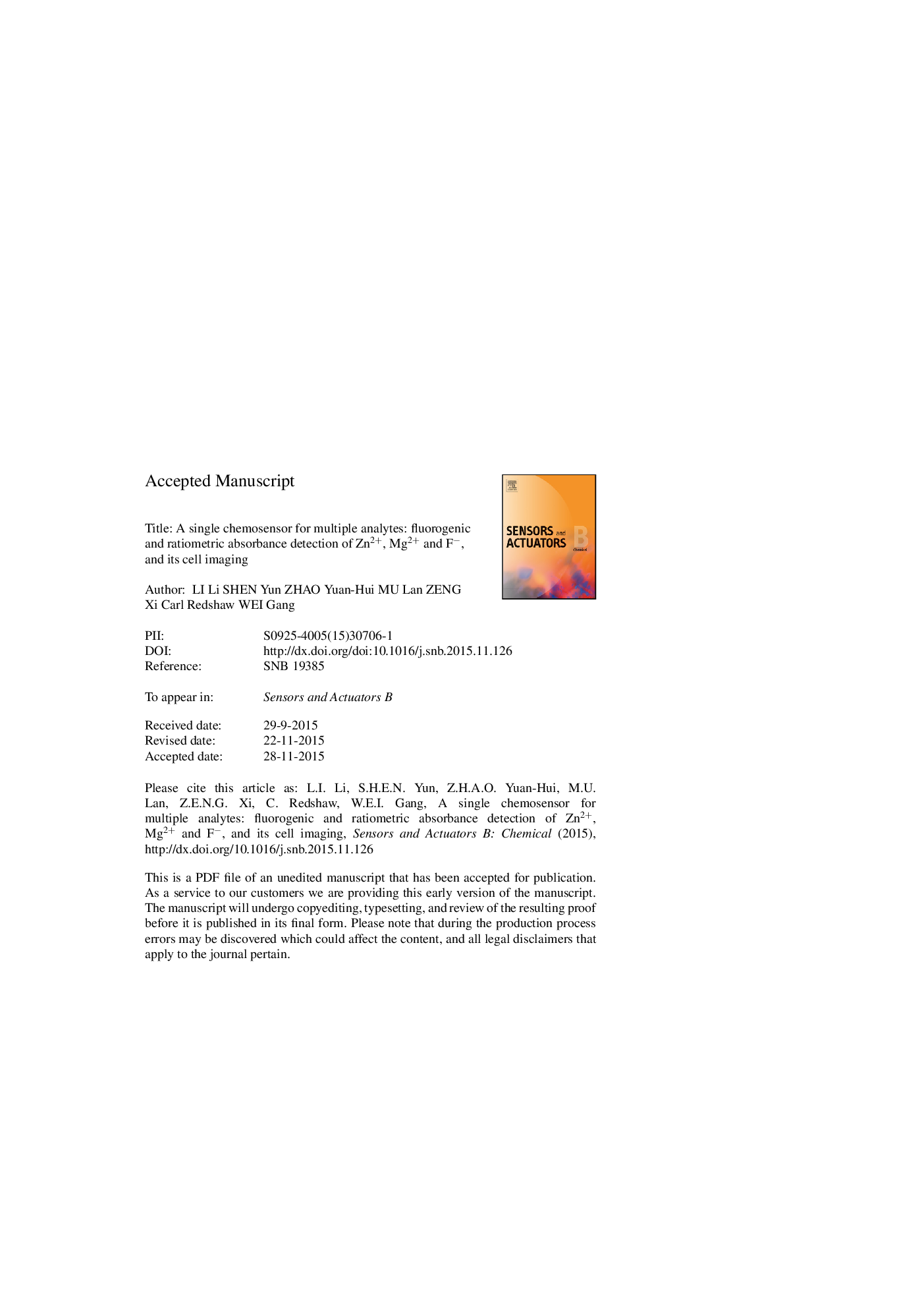| Article ID | Journal | Published Year | Pages | File Type |
|---|---|---|---|---|
| 7144778 | Sensors and Actuators B: Chemical | 2016 | 40 Pages |
Abstract
A simple coumarin based sensor 1 has been synthesized from the condensation reaction of 7-hydroxycoumarin and ethylenediamine via the intermediate 7-hydroxy-8-aldehyde-coumarin. As a multiple analysis sensor, 1 can monitor Zn2+ with the fluorescence enhanced at 457Â nm, and ratiometric detection at 290Â nm, 350Â nm and 420Â nm in DMF/H2O (1/4, v/v) medium. Sensor 1 can also monitor Mg2+ with the fluorescence enhanced at 430Â nm, and ratiometric detection at 290Â nm, 370Â nm and 430Â nm in DMF medium through the interaction of chelation enhance fluorescence (CHEF) with metal ions. Furthermore, 1 also can monitor Fâ with the fluorescence enhanced at 460Â nm, and ratiometric detection at 290Â nm and 390Â nm in DMF medium simultaneously via hydrogen bonding and deprotonation with Fâ anion. Spectral titration, isothermal titration calorimetry and mass spectrometry revealed that the sensor formed a 1:1 complex with Mg2+, Zn2+ or F-, with stability constants of 4.5Â ÃÂ 106, 3.4Â ÃÂ 106, 8.0Â ÃÂ 104Â Mâ1 respectively. The complexation of the ions by 1 was an exothermic reaction driven by entropy processes. Furthermore, the sensor exhibits good membrane-permeability and was capable of monitoring at the intracellular Zn2+ level in living cells.
Keywords
Related Topics
Physical Sciences and Engineering
Chemistry
Analytical Chemistry
Authors
LI Li, SHEN Yun, ZHAO Yuan-Hui, MU Lan, ZENG Xi, Carl Redshaw, WEI Gang,
